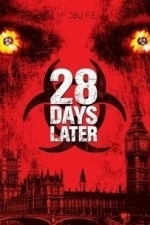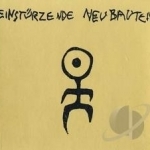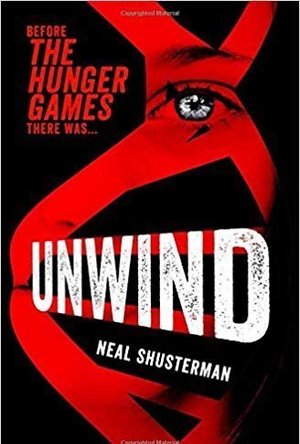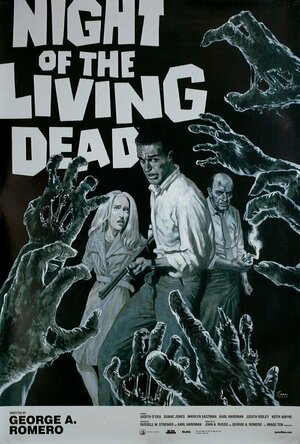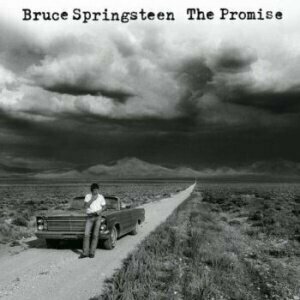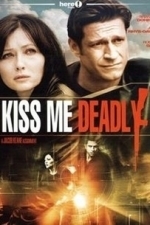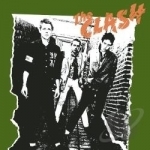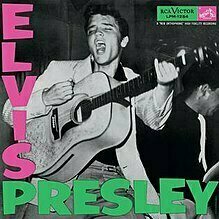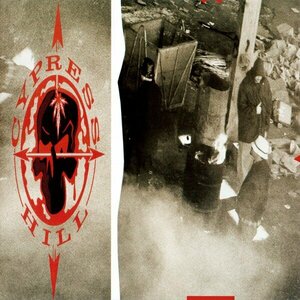Search
Search results
Lenard (726 KP) rated Blinded by the Light (2019) in Movies
Sep 2, 2019
It's a Sin
1987 Luton, UK: New wave rules the radio, Margaret Thatcher controls the country which is leading to closed factories and people losing their jobs, and Pakistanis are moving into neighbors which the "white" majority resents (when people are losing their jobs, it is easier to blame the "others" moving in instead of the government whose policies have led to these losses). But I digress. Ravi is trapped between two cultures, his Pakistani family and the culture he grows up in in Luton. One day at his school, he meets a Sikh student who gives him two cassettes by Bruce Springsteen and he meets a writing teacher who encourages him to write what he knows. Like the culture clash in his soul, his heart is consumed by these Springsteen songs and expressing his feelings through writing. As is wont in these films, his parents and town learn to accept him and his obvious talent.
Two things struck me about the film. The first is the costume for the father. With the exception of the wedding party which I will discuss in my second, the father is dressed in a dress shirt, tie, and slacks, sometimes a sportcoat. This is the traditional outfit of a 1st generation immigrant. Even though he works in a factory manufacturing cars, he still goes to work or out in public dressed like a successful businessman/financial advisor. There is a belief that in order to achieve success, you must dress as though you have already attained that success. The second is the connection to Bend It Like Beckham, Chadha's previous film, which had a lot more success in the US. There is the best friend's parent who accepts the protagonist quicker than their own. But I am talking about the wedding party scene. In both films, the family is having a wedding party and the protagonist has to leave because there is something urgent that they need to do (play in a soccer game, buy tickets to a Springsteen concert). Family members assist the protagonist to get away without the parents noticing and in each case conflict ensues that brings a feeling of abandonment from the immediate family.
Two things struck me about the film. The first is the costume for the father. With the exception of the wedding party which I will discuss in my second, the father is dressed in a dress shirt, tie, and slacks, sometimes a sportcoat. This is the traditional outfit of a 1st generation immigrant. Even though he works in a factory manufacturing cars, he still goes to work or out in public dressed like a successful businessman/financial advisor. There is a belief that in order to achieve success, you must dress as though you have already attained that success. The second is the connection to Bend It Like Beckham, Chadha's previous film, which had a lot more success in the US. There is the best friend's parent who accepts the protagonist quicker than their own. But I am talking about the wedding party scene. In both films, the family is having a wedding party and the protagonist has to leave because there is something urgent that they need to do (play in a soccer game, buy tickets to a Springsteen concert). Family members assist the protagonist to get away without the parents noticing and in each case conflict ensues that brings a feeling of abandonment from the immediate family.
Darren (1599 KP) rated 28 Days Later (2002) in Movies
Jun 20, 2019
Verdict: Modern Zombie Gem
Story: 28 Days Later starts by showing a group of activists breaking into a laboratory where chimps are forced to watch some of the most gruesome sites in human history. This was designed to create pure rage and when the chimps are released an epidemic starts. 28 Days Later (title drop) we meet Jim (Murphy) who wakes up in a hospital, alone he searches looking for help but the hospital, streets and everywhere is empty. Wonder around the empty London Jim finds a church filled with infected that chase him before getting save by Mark (Huntley) and Selena (Harris) who also fill in the blanks of what happened.
Jim finds out the harsh reality of the world now but meeting Frank (Gleeson) and his daughter Hannah (Burns) gives them a chance to go to a radio signal left by the military. The group soon find the military holding up in a mansion lead by Major Henry West (Eccleston) but not everything is as it seems.
28 Days Later brings the modern infected zombie film to life in one of the best story ideas we have seen. It is good to see a story that the infection can only be spread rather than you turn when you die which is big change to all we have seen. The journey itself is been there seen that but what we get is a revenge film with infected around once we meet the military. This shows us that the enemy could come from all direction and our characters are never going to be safe in the world now. This is easily one of the best zombie based films in recent years. (9/10)
REPORT THIS AD
Actor Review
Cillian Murphy: Jim waking up alone in a hospital he wonders the empty city before being found by other survivors, with a group he heads to the military safe zone where he ends up having to fight to save the rest of his group from not only infected but the soldiers. Cillian gives a great performance and this put him on the map for bigger roles. (9/10)
jim
Naomie Harris: Selena the nonsense survivor who takes no prisoners which we see from the moment her fellow survivor gets infected. Naomie gives a good performance showing that she was always going to be in bigger films. (8/10)
Brendan Gleeson: Frank caring father who has waited for support before taking his daughter to a radio signal he has been hearing. This character may only be a supporting character but his final moments are one of the most memorable turns in this genre history. Brendan does a good job in what is just a supporting performance. (8/10)
Christopher Eccleston: Major Henry West who is running the military unit that has been calling for the survivors but his motives are not what they seem. Christopher gives a good performance in the role. (7/10)
Support Cast: 28 Days Later doesn’t have the biggest supporting cast we have a couple of other survivors as well as the soldiers in the military unit. They all help as they show us what the characters are capable off.
Director Review: Danny Boyle – Danny does a great job directing this zombie classic that is easily one of the best in the genre. (9/10)
Horror: 28 Days Later uses plenty of horror elements with survival horror shinning through. (10/10)
Music: 28 Days Later uses brilliant scores to build the tension up through the scenes. (9/10)
Settings: 28 Days Later uses the settings really well to show how empty busy places could be when the world comes to an end. (9/10)
Special Effects: 28 Days Later uses great special effects with the infected creation. (9/10)
Suggestion: 28 Days Later is one to watch for every horror fan out there. (Horror Fans Watch)
Best Part: Suspense building.
Worst Part: Nothing
Action Scene Of The Film: Jim breaks into the mansion
REPORT THIS AD
Kill Of The Film: Frank
Scariest Scene: Jim’s returns home
Believability: No (0/10)
Chances of Tears: No (0/10)
Chances of Sequel: Has one sequel with talks of another always around.
Post Credits Scene: There is the alternative ending
Oscar Chances: No
Box Office: $82 Million
Budget: $8 Million
Runtime: 1 Hour 53 Minutes
Tagline: His fear began when he woke up alone. His terror began when he realised he wasn’t.
Trivia: The scene where Jim and Selena celebrate with Frank and Hannah was shot on September 11, 2001. Danny Boyle said it felt extremely strange to shoot a celebratory scene on that particular day.
Overall: Brilliant Infected Film
https://moviesreview101.com/2015/03/14/28-days-later-2002/
Story: 28 Days Later starts by showing a group of activists breaking into a laboratory where chimps are forced to watch some of the most gruesome sites in human history. This was designed to create pure rage and when the chimps are released an epidemic starts. 28 Days Later (title drop) we meet Jim (Murphy) who wakes up in a hospital, alone he searches looking for help but the hospital, streets and everywhere is empty. Wonder around the empty London Jim finds a church filled with infected that chase him before getting save by Mark (Huntley) and Selena (Harris) who also fill in the blanks of what happened.
Jim finds out the harsh reality of the world now but meeting Frank (Gleeson) and his daughter Hannah (Burns) gives them a chance to go to a radio signal left by the military. The group soon find the military holding up in a mansion lead by Major Henry West (Eccleston) but not everything is as it seems.
28 Days Later brings the modern infected zombie film to life in one of the best story ideas we have seen. It is good to see a story that the infection can only be spread rather than you turn when you die which is big change to all we have seen. The journey itself is been there seen that but what we get is a revenge film with infected around once we meet the military. This shows us that the enemy could come from all direction and our characters are never going to be safe in the world now. This is easily one of the best zombie based films in recent years. (9/10)
REPORT THIS AD
Actor Review
Cillian Murphy: Jim waking up alone in a hospital he wonders the empty city before being found by other survivors, with a group he heads to the military safe zone where he ends up having to fight to save the rest of his group from not only infected but the soldiers. Cillian gives a great performance and this put him on the map for bigger roles. (9/10)
jim
Naomie Harris: Selena the nonsense survivor who takes no prisoners which we see from the moment her fellow survivor gets infected. Naomie gives a good performance showing that she was always going to be in bigger films. (8/10)
Brendan Gleeson: Frank caring father who has waited for support before taking his daughter to a radio signal he has been hearing. This character may only be a supporting character but his final moments are one of the most memorable turns in this genre history. Brendan does a good job in what is just a supporting performance. (8/10)
Christopher Eccleston: Major Henry West who is running the military unit that has been calling for the survivors but his motives are not what they seem. Christopher gives a good performance in the role. (7/10)
Support Cast: 28 Days Later doesn’t have the biggest supporting cast we have a couple of other survivors as well as the soldiers in the military unit. They all help as they show us what the characters are capable off.
Director Review: Danny Boyle – Danny does a great job directing this zombie classic that is easily one of the best in the genre. (9/10)
Horror: 28 Days Later uses plenty of horror elements with survival horror shinning through. (10/10)
Music: 28 Days Later uses brilliant scores to build the tension up through the scenes. (9/10)
Settings: 28 Days Later uses the settings really well to show how empty busy places could be when the world comes to an end. (9/10)
Special Effects: 28 Days Later uses great special effects with the infected creation. (9/10)
Suggestion: 28 Days Later is one to watch for every horror fan out there. (Horror Fans Watch)
Best Part: Suspense building.
Worst Part: Nothing
Action Scene Of The Film: Jim breaks into the mansion
REPORT THIS AD
Kill Of The Film: Frank
Scariest Scene: Jim’s returns home
Believability: No (0/10)
Chances of Tears: No (0/10)
Chances of Sequel: Has one sequel with talks of another always around.
Post Credits Scene: There is the alternative ending
Oscar Chances: No
Box Office: $82 Million
Budget: $8 Million
Runtime: 1 Hour 53 Minutes
Tagline: His fear began when he woke up alone. His terror began when he realised he wasn’t.
Trivia: The scene where Jim and Selena celebrate with Frank and Hannah was shot on September 11, 2001. Danny Boyle said it felt extremely strange to shoot a celebratory scene on that particular day.
Overall: Brilliant Infected Film
https://moviesreview101.com/2015/03/14/28-days-later-2002/
Lee Ronaldo recommended Kollaps by Einsturzende Neubauten in Music (curated)
Quinn Blackburn (3 KP) rated Unwind (Unwind, #1) in Books
May 14, 2018
Render Unto Cesar
Shusterman takes dystopian futures a step above the ordinary in this dark coming of age tale. In the not too distant future a war was fought in the U.S. over abortion, the 2nd Civil War. To appease all sides an unthinkable accord was reached. Instead of abortion, between the ages of 13 and 18 you can choose to send your child to a Harvest camp to be unwound, taken apart and all their body parts donated to others. We are given three characters with differing perspectives through which we see the workings of this world.
One angry young man always in fights whose parents have given up reaching him. One orphan, a Stork, left on someone's doorstep years ago who doesn't make the necessary grades to keep her off the Harvest camp bus. And Lev, who was conceived and raised by his devoutly religious parents as a Tithe, someone specifically born to be unwound in the church's name. This unlikely trio meet on their way to be unwound and all three are at a loss as to what to do when a resistance movement effort frees them from the bus.
What about Lev's glorious destiny to be unwound for God; is he still chosen, still a willing sacrifice? Where do you go when society says you no longer have the right to live? Who will help you survive in secret until you are too old to be unwound? How can you avoid the bounty hunters who live to capture escapees? What happens to the soul of an Unwound? Do they live on, a second conscience, a wisp of memories, within the body of their new host? Does anyone have the right to decide who in society has the right to live and who would be more useful unwound?
The writer immerses us completely in this bizarre yet oh so familiar society giving us plenty of perspectives from every level. He even included tv and radio commercials to help us understand how normal it has become to consider unwinding another human being. The creep factor is high and sustains itself through all three books in this set. Unwind introduces us to the world of the unwound in a well told thought provoking tale that may have you questioning everything you thought you ever knew about yourself.
One angry young man always in fights whose parents have given up reaching him. One orphan, a Stork, left on someone's doorstep years ago who doesn't make the necessary grades to keep her off the Harvest camp bus. And Lev, who was conceived and raised by his devoutly religious parents as a Tithe, someone specifically born to be unwound in the church's name. This unlikely trio meet on their way to be unwound and all three are at a loss as to what to do when a resistance movement effort frees them from the bus.
What about Lev's glorious destiny to be unwound for God; is he still chosen, still a willing sacrifice? Where do you go when society says you no longer have the right to live? Who will help you survive in secret until you are too old to be unwound? How can you avoid the bounty hunters who live to capture escapees? What happens to the soul of an Unwound? Do they live on, a second conscience, a wisp of memories, within the body of their new host? Does anyone have the right to decide who in society has the right to live and who would be more useful unwound?
The writer immerses us completely in this bizarre yet oh so familiar society giving us plenty of perspectives from every level. He even included tv and radio commercials to help us understand how normal it has become to consider unwinding another human being. The creep factor is high and sustains itself through all three books in this set. Unwind introduces us to the world of the unwound in a well told thought provoking tale that may have you questioning everything you thought you ever knew about yourself.
RəX Regent (349 KP) rated Night of the Living Dead (1968) in Movies
Feb 19, 2019
Iconic, influential and ground-breaking. All words to describe George A. Romero’s inaugural zombie horror, but what sets this apart from its contemporaries and the endless variations in the genre in which this Indie movie helped spawn?
Well to begin with, this is far from a simple zombie thriller. The real villains here are the collection of damaged human characters who all find themselves trapped together in an old farmhouse, barricaded within its fragile wooden walls, fighting not only the onslaught of zombie without, but the angst and fear from within.
At times they work together but unlike most films like this, the group rarely work at all, with conflicted views on how to survive, blinding them to the fact that if they only worked together they may just do so.
Instead, they all end up dead, with our leading man, a strong, smart black character, which at the time was a bold choice, being murdered by the redneck police posse, who mistake him for a zombie. But the metaphor, though hard to ignore, of a black man being gunned down without the white men bothering to ensure that he was zombie, may just be a coincidence, but the irony that he, Ben (Duane Jones) manages to survive until the end only be to gunned down in the final moments, is a tragedy that sums up this film’s tone.
With a killer child, a nude female zombie, a dysfunctional couple and the first named victim displaying a complacent contempt for God and the church, this group are real, though the acting standards are variable, the writing and direction are constantly very good, with a sense or gritty realism permeating throughout. Maintained by good pacing and gruesome cannibalistic action, this raised the bar of the genre, both now and then.
Even the zombies get a reasonable, yet none definitive explanation, as told through the radio and TV news. Radiation bringing the dead back to life, well, it may be the trope of 1960’s sci fi but it was well explained and the news reports were well composed, feeling more realistic than most movie news broadcasts.
Romero may have gone on to milk this franchise for all it is worth in the decades since but this opening low budget gem is a real piece of work; A complex moral drama set on one chaotic night in which the dead become living again.
Well to begin with, this is far from a simple zombie thriller. The real villains here are the collection of damaged human characters who all find themselves trapped together in an old farmhouse, barricaded within its fragile wooden walls, fighting not only the onslaught of zombie without, but the angst and fear from within.
At times they work together but unlike most films like this, the group rarely work at all, with conflicted views on how to survive, blinding them to the fact that if they only worked together they may just do so.
Instead, they all end up dead, with our leading man, a strong, smart black character, which at the time was a bold choice, being murdered by the redneck police posse, who mistake him for a zombie. But the metaphor, though hard to ignore, of a black man being gunned down without the white men bothering to ensure that he was zombie, may just be a coincidence, but the irony that he, Ben (Duane Jones) manages to survive until the end only be to gunned down in the final moments, is a tragedy that sums up this film’s tone.
With a killer child, a nude female zombie, a dysfunctional couple and the first named victim displaying a complacent contempt for God and the church, this group are real, though the acting standards are variable, the writing and direction are constantly very good, with a sense or gritty realism permeating throughout. Maintained by good pacing and gruesome cannibalistic action, this raised the bar of the genre, both now and then.
Even the zombies get a reasonable, yet none definitive explanation, as told through the radio and TV news. Radiation bringing the dead back to life, well, it may be the trope of 1960’s sci fi but it was well explained and the news reports were well composed, feeling more realistic than most movie news broadcasts.
Romero may have gone on to milk this franchise for all it is worth in the decades since but this opening low budget gem is a real piece of work; A complex moral drama set on one chaotic night in which the dead become living again.

